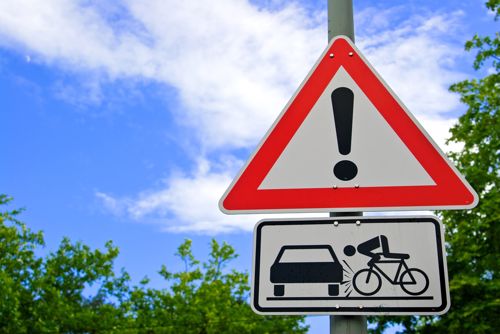
IoT cycles protect riders
By Max BurkhalterSeptember 22, 2022
Many bicycle enthusiasts assume that they'll be visible to the vehicles they share the roads with. Despite preventative measures such as helmets and fluorescent colors designed to draw the attention of motorists, collisions and injuries are an unfortunate reality for millions of riders annually.
The World Health Organization (WHO) estimates that approximately 41,000 cyclists are killed worldwide as result of injuries sustained in motor-vehicle related accidents every year. Riders sharing roadways with motor vehicles are vulnerable in ways that other commuters are not, and the reality of many safety measures is that they simply can't withstand the impact of a motor vehicle collision
With more commuters turning to bicycles as part of a global push towards sustainable transportation, an increased interest is being placed on the role that technology can play in developing safety methods for riders. This article will examine the ways in which Internet of Things (IoT) technology endeavors to keep our roads safe for all forms of transportation.
Smart cycles
A recent Zippia report indicates that 17-20 million bicycles were sold last year. As the electronic bicycle (ebike) industry continues to grow (market sales grew by 240% between 2020 and 2021), more tech companies are developing products and applications related to what was once a purely mechanical vehicle.
As reported by IoT Tech News, mobility platform Spoke is partnering with T-Mobile and Deutsche Telekom to harness the power of T IoT in order to protect vulnerable road users (VRU) such as cyclists. By connecting bicycles to the IoT, motor vehicles can be alerted to a rider's presence via cellular vehicle-to-everything (C-V2X) communication. Spoke hopes to create an ecosystem of connected sensors and smart devices that enable real-time updates about riders in the immediate vicinity of motor vehicle operators.
Leveraging the latest LTE and 5G networks, cyclists and motorists will be able to detect each other digitally, potentially reducing the volume of accidents on busy roads.

Safe cities
A collaboration between the city of Utrecht, Netherlands and Cycledata is resulting in the development of bicycle radar units. As detailed by Highways Today, the radar systems will be linked to Smart Traffic Controllers throughout the city in order to help road managers and city planners anticipate traffic situations. Under the parameters of the pilot program, a bicycle measuring system known as Signum identifies approaching cyclists, assesses their numbers and calculates the speed and direction of travel. The information is forwarded to an intelligent traffic light controller (iSTC) that designates priority to large groups of cyclists, resulting in expedited and sustained green lights to match the cyclist volume.
Perle powers automotive innovation
Perle is proud to partner with leaders in the transportation industry as they strive to keep travelers safe. Perle offers device servers and terminal servers to aid in the connectivity required to enhance traffic monitoring capabilities. For more information on how Perle works with providers to create intelligent transportation systems and dynamic message signs, visit our transportation solutions page.



